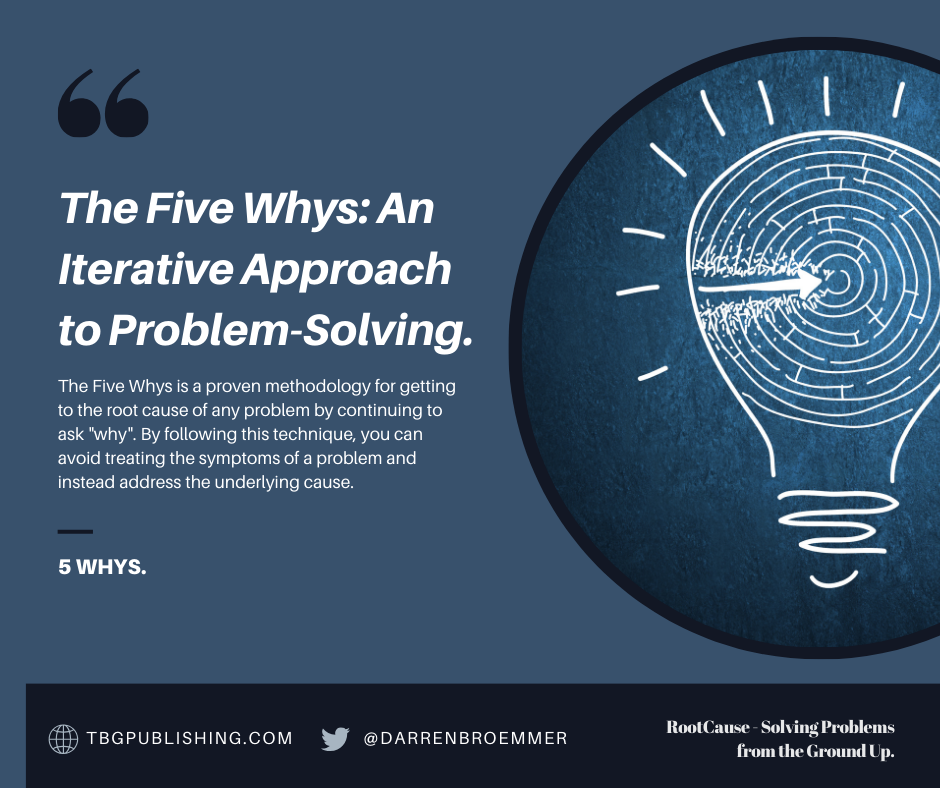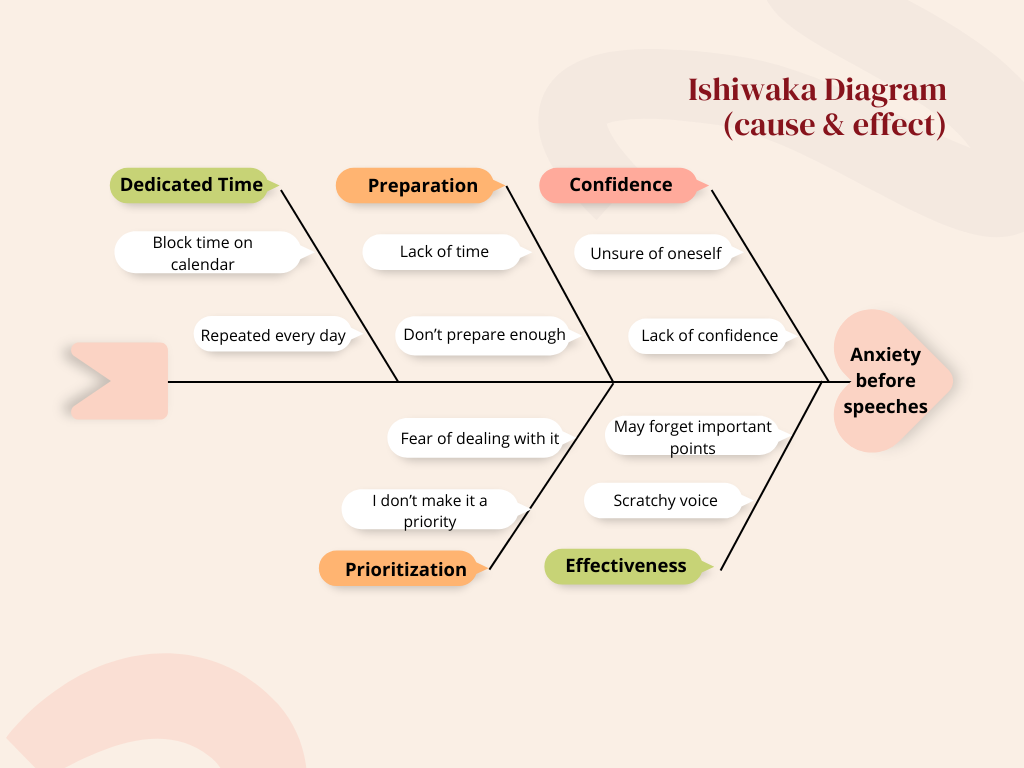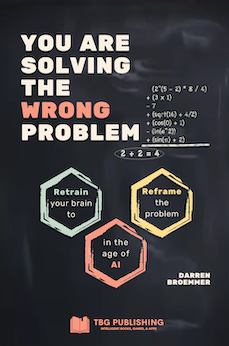
Optimizing Problem Solving with the Five Whys Method
Category: Self Improvement
Tags: Problem Solving
Problem-solving is an essential skill in both personal and professional contexts. One effective technique for getting to the heart of an issue is the Five Whys method. This approach helps to identify the root cause of a problem by repeatedly asking "why?". In this article, we'll explore how the Five Whys can unveil underlying issues and lead to lasting solutions.
Case Study: Being Late to Work
Consider Bradley, who consistently arrives late to work, despite his best efforts. At first glance, the problem seems straightforward: he's often caught in traffic. However, by applying the Five Whys method, Bradley uncovers a deeper issue. He's not just battling traffic; he's struggling with poor sleep habits and inadequate exercise, leading to his morning delays.
He asks, why does he keep hitting traffic? He leaves home too close to the start of rush hour. He digs deeper. Why does he leave so close to rush hour? He often sleeps through his alarm or hits snooze several times. Why does this happen? He usually stays up too late scrolling through social media on his phone. He goes to bed at a decent time but doesn't fall asleep until hours later.
Bradley is getting closer to a root cause. He can decide not to take his phone into his bedroom, although he is concerned no one could reach him in case of an emergency. He could limit his phone time before going to sleep to 15 minutes, or some other reasonable time limit. Alternatively, he could define rules for himself and develop better screen time habits.
Or, he could keep asking why? Why does he feel the need to scroll social media for so long? What is he getting out of it? Why isn't he already tired enough to fall asleep? Does he get enough exercise? Perhaps he doesn't, and he needs to. If he took a long walk or went to the gym, he would likely sleep better and fall asleep faster.
By repeatedly asking "why" to drill down beyond surface-level symptoms, Bradley was able to uncover his late-night phone use and lack of exercise as root causes contributing to his tardiness at work. The core problems we seek to solve often originate far upstream of the surface-level issues we initially perceive. Tracing causal chains by asking "why" peels the onion layer by layer. This is done until the primary root cause is clear to see.
The Process of the Five Whys:
- Identify the Top-Level Problem: Write down your primary issue.
- Ask Why: Understand why this problem occurs. Is the initial answer the root cause?
- Iterate: If the answer doesn't reveal the root cause, ask why again. Continue this process.
- Repeat: The technique suggests reaching the root cause within five iterations, but complex problems might require more.
Complex problem may require further iterations, while other problems may not need five. The most important point is to continue to ask why until you feel you hit the core issue.
Beyond the Analysis
Applying the Five Whys isn't just about analysis; it's about action. Once you have identified the root cause, it’s crucial to design and implement strategies that address the core issue, not just the symptoms. This is where real change happens.
The point is that you don't stop until you feel confident you have reached the root cause. The main idea is to take a proactive approach and target the source of the problem. Embrace an open mind and be willing to challenge assumptions. You might uncover surprising insights along the way.
Of course, just performing the Five Whys analysis doesn't solve anything in itself – it builds understanding. You still need to design and implement solutions that address the underlying problem. What it does is differentiate between symptoms and root causes. Morning traffic was only a symptom for Bradley. Sure, it could explain the occasional late arrival, but it wasn't the real reason he was consistently late to work.
Public Speaking Anxiety: A Common Challenge
Public speaking anxiety is a widespread concern. By applying the Five Whys, we can dissect this fear and uncover its roots, ranging from lack of preparation to deeper psychological factors. This understanding paves the way for effective strategies to combat anxiety, such as dedicated preparation time and practicing self-awareness.
- Why am I anxious about presenting? A lack of preparation surfaces as a common issue. We feel unsure of ourselves when not dedicating sufficient time to practice and internalize the content. If we knew the material inside and out, that would go a long way toward alleviating the stress we feel.
- Why am I unprepared? Perhaps we didn't allocate enough dedicated prep hours. We may not have had a realistic expectation of how much time we would need to prepare. We may simply be busy, and think that we can just wing it at the last second.
- Why don’t I spend enough time preparing? We are busy, sure, but we don't make preparation a priority. People walk into our office asking questions, and this distracts us. We get pulled into meetings and don't have a block of time set aside where we can dig in and prepare. Our busyness mindset is sabotaging our success. We need to shift our priorities and be more disciplined moving forward.
- Why don't we prioritize preparing for presentations? A lack of dedicated time is the problem. It takes ten minutes or so to get into a zone. Once we are in a flow, we can organize the presentation exactly how we want it, and prepare what we are going to say for each slide. We create some personal notes with the most important points we want to make. If this is the real problem, then blocking time on our calendar for internal preparation is the solution. For some people though, they may still need to dig deeper.
- Why don't we block time on our calendar to prepare? Perhaps the anxiety of presenting subconsciously makes us not want to think about it. We don't want to experience the stress before the event even happens. Preparation makes us think about standing up at the podium in front of the audience. Now, we are at a potential root cause.
If you have anxiety about speaking in public, your root cause may be different. Your entire chain of reasoning may differ, but keep asking yourself questions until you feel confident you are at the core. Ask question until you can't go any deeper. Then tackle that problem.
Once you have tailored insights from this analysis, you can craft an action plan. Block 2 hours every day for the two weeks leading up to a talk so you have time to prepare. Do a deep dive into the content, run through the script, and become 100% comfortable with your delivery. Once you feel ready, you may realize much of the anxiety stemmed from simply not taking adequate time to prepare.
I used to feel nervous at the beginning of a presentation, even when I felt prepared. However, once I got started, it felt like just talking about a subject I knew. That is where the preparation kicked in. Thus, in order to get past this initial hump, I would memorize verbatim the first few sentences I wanted to say. This enabled me to get started, and once the conversation was underway, everything was fine.
At the end of the day, people won't remember much about your presentation except for the main point. And that is only if you are lucky, or a really good presenter. Be sure to highlight points you want the listener to remember. They won't be thinking about whether you were a perfect orator or spoke eloquently. They will notice whether you are authentic. If you are just blowing smoke, the audience will sense that and lose interest. Being authentic is something we can control. If we prepare and focus on being ourselves, we will be fine. However, if we treat it like we are giving a State of the Union address, things may go sideways. If we approach it as presenting our research or a proposal we believe in, things will work out.
Non-Linear Exploration
The Five Whys method isn’t strictly linear. It often reveals a complex web of interconnected causes, necessitating a holistic approach to understanding and solving problems. Tools like fishbone diagrams can visually map out these complexities, aiding in a comprehensive analysis.
I am a visual person, so I prefer to diagram things. I create a mental model by creating a visual model. Other people learn differently or prefer textual notes. However you do it, sketch out the causal chain all the way to the end.
Fishbone diagrams, also known as Ishikawa or cause-and-effect diagrams, offer a visual representation that aligns well with the Five Whys technique. The diagram resembles a fishbone, with the main problem stated at the "head" and various branches representing potential causes. Each branch can further branch out into sub-causes. This graphical representation enables individuals and teams to map out various contributing factors. It accommodates the fact that there may be more than one answer.

After you have created the diagram, keep it around. These things tend not to be static. They evolve over time. You may find out a month later that there is actually another level underneath one of the branches.
Conclusion: A Continuous Process
The journey of problem-solving with the Five Whys is continuous and evolving. It's not just about finding an answer; it's about developing a mindset of curiosity and critical thinking. Always be ready to ask questions and adapt your understanding as new information emerges.

